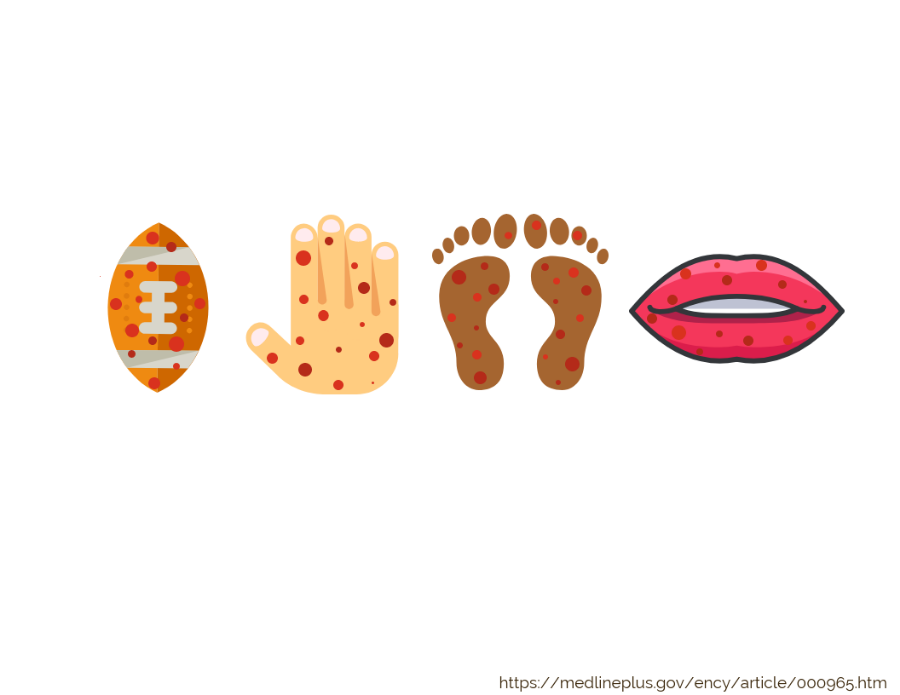Contagious Hand-foot-and-mouth disease kicks way through varsity football team
November 23, 2018
Boiling fevers, mouth sores, and blistering skin out of a scary movie — the symptoms of Hand-foot-and-mouth disease that varsity quarterback Brendan Cwiklinski and two of his teammates faced, forcing them to skip out on football practice.
According to MedlinePlus, Hand-foot-and-mouth disease usually presents itself three to seven days after a person has come in contact with the virus in the form of small-blistery rashes on the hands and feet, as well as painful lesions on the inside of the mouth. Other symptoms may include malaise, fever, loss of appetite and headaches.
Senior Dominic Hadley, the varsity football linebacker, said he was more concerned about the performance of the team when vital players became sick than he was about catching the contagious virus.
“It caused a little scare, some kids I know were scared to practice because obviously they didn’t want to get it, like, who would?” Hadley said. “I wore long sleeves and gloves to make sure I didn’t get it, but if I got it, I got it. It wasn’t gonna stop me from going to practice — I’ve got to get better.”
Also named Coxsackievirus Infection, the disease can be caused by multiple different viruses and currently does not have a vaccine. Furthermore, the disease is often treated on a symptom-relief basis, meaning there is no specific treatment to cure the sickness.
Wide receiver, senior Sean Bly, said that it is up to every individual to make sure they personally do not get the disease and spread it to others.
“It’s not good for everybody, but it’s just, I think we should be washing our hands more and taking care of ourselves,” Bly said.
According to The Center for Disease Control and Prevention, Hand-foot-and-mouth can be prevented by washing hands, disinfecting common areas, and avoiding close contact with those who have the disease.
Bly and Cwiklinski both said the football program has taken precautions to prevent further spread of the disease. So far, the team has sterilized the locker room while trying to clean out the lockers and washing the football gear as often as they can.
Senior varsity cheerleader Cicille Charles said she was worried about catching the disease and thinks that it is the school’s responsibility to offer methods to prevent its spread further.
“(The school) should always make sure that there is hand sanitizer in the dispensers in the hallways and that there is soap in the bathrooms,” Charles said. “Maybe wiping the desks down after students use them (will keep) the classrooms cleaner.”
Although the origin of the outbreak is unknown, Hadley said he believes the varsity team obtained the contagious virus through other teams. The junior varsity as well as the freshman football team have both had recent outbreaks of their own.
Now that the team is clean, Hadley said he doesn’t think it’s impacted the team negatively at all. Rather, he sees the outbreak as being out of sight, out of mind.
“I don’t think it’s affected the way that anyone really has done anything, because when you’re on the field you really forget about it,” Hadley said. “Then you get back to the locker room, like crap, there’s hand-foot-mouth going around. It’s really no big deal.”












